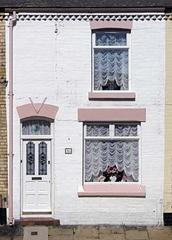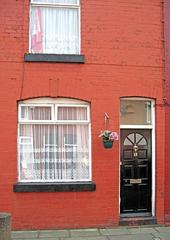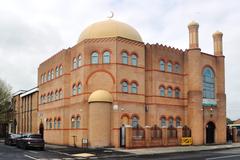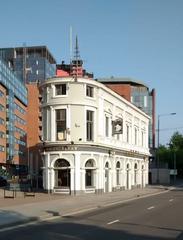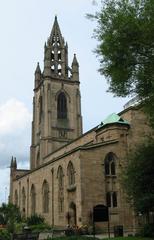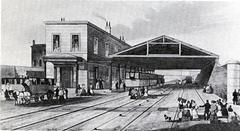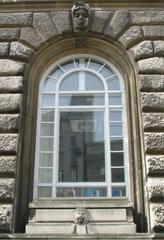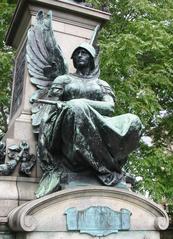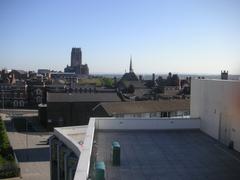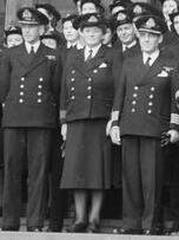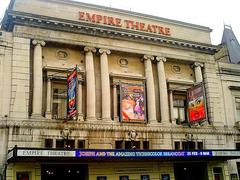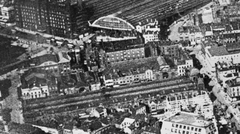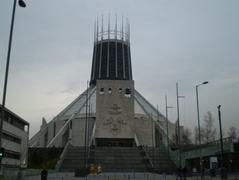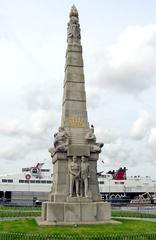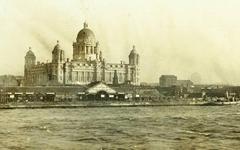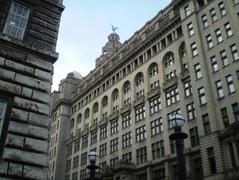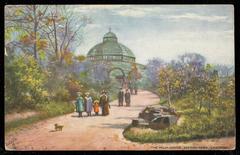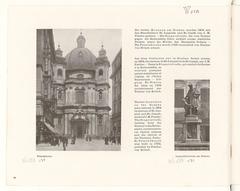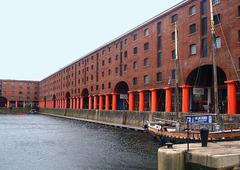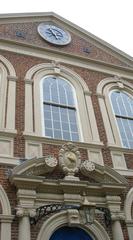Everton Water Tower: Visiting Hours, Tickets, and Liverpool Historical Sites Guide
Date: 04/07/2025
Introduction
Everton Water Tower is a remarkable emblem of Liverpool’s Victorian-era ambition—merging industrial ingenuity, civic pride, and architectural grandeur. Perched atop Everton Brow, this Grade II listed structure has dominated the city’s northern skyline since 1857. While no longer operational, the tower remains a cherished icon, reflecting Liverpool’s rapid industrial growth and ongoing commitment to heritage preservation. This guide provides a comprehensive overview of Everton Water Tower: its history, architecture, cultural significance, visitor information, accessibility, nearby attractions, redevelopment plans, and how to stay updated on special events and openings.
Whether you are a local history buff, architectural enthusiast, or cultural tourist, this guide will help you explore the unique story and enduring legacy of Everton Water Tower within Liverpool’s rich historical landscape. For up-to-date visitor information, consult official tourism resources and local heritage organizations (Historic England; Liverpool World; Liverpool Echo).
Table of Contents
- Introduction
- Origins and Construction
- Role in Liverpool’s Water Supply
- Architectural Features and Innovation
- Historical and Cultural Significance
- Preservation and Heritage Status
- Visiting Hours, Tickets, and Accessibility
- Nearby Attractions and Heritage Trails
- Visuals, Media, and Photography
- FAQs
- Future Developments and Community Impact
- References
Origins and Construction
Everton Water Tower was constructed in 1857, designed by Thomas Duncan, Liverpool’s Water Engineer. Its elevated position (approx. 90 meters above sea level) atop Everton Brow was strategically chosen for gravity-assisted water distribution to the city’s expanding northern districts. The sandstone cylindrical structure, measuring approximately 27 meters in height and 13 meters in diameter, showcases Victorian Gothic Revival detailing—an embodiment of the era’s blend of utility and decorative flourish (Historic England).
Role in Liverpool’s Water Supply
In the 19th century, Liverpool’s population exploded from 77,000 in 1801 to over 440,000 by 1861 (Vision of Britain). To address the growing demand for clean water and curb outbreaks of waterborne diseases, the tower operated as a high-level reservoir, receiving water from Bootle’s pumping stations and distributing it by gravity to surrounding districts. This system marked a leap forward in urban infrastructure and public health (Liverpool City Council).
Architectural Features and Engineering Innovations
The tower’s robust sandstone construction is punctuated by decorative arcades, pilasters, and a castellated parapet. Its concealed cast-iron tank, engineered to withstand immense pressure and hold up to 650,000 liters, exemplifies Victorian innovation. The thick masonry walls and minimal fenestration protected the water supply from contamination and the elements (Historic England).
Historical and Cultural Significance
Everton Water Tower stands as a testament to Liverpool’s industrial prowess and commitment to civic improvement. Beyond its function, the tower became a defining feature of the city’s skyline, a navigation point for ships, and a symbol of local identity. It has inspired artists, photographers, and community campaigns, and remains closely linked to the area’s football heritage and Victorian-era streets (British History Online; Liverpool World).
Preservation and Heritage Status
Designated as a Grade II listed building in 1975, the tower is legally protected to preserve its architectural and historic character (Historic England). Community-led initiatives and local councils have considered adaptive reuse proposals, including viewing galleries, event spaces, and residential conversions. Any work must meet stringent conservation standards (Liverpool Echo; Liverpool Waters).
Visiting Hours, Tickets, and Accessibility
Current Status (as of July 2025):
- Interior Access: The tower is not open for daily public tours or regular interior visits.
- Exterior Viewing: The public can admire the exterior and panoramic city views from Everton Park at any time.
- Special Events: Rare open days and guided tours are organized by local heritage groups—monitor their websites and social media for announcements.
- Tickets: Entry during such events is typically free or donation-based; some tours may require advance booking.
- Accessibility: Outdoor areas are wheelchair-accessible. Interior access during special events usually involves stairs; future redevelopment plans include a lift.
- Getting There: Located on Margaret Street, Everton Brow. Accessible by local buses; Liverpool Lime Street station is about 1.5 miles away. Parking is limited; public transport is recommended.
Nearby Attractions and Heritage Trails
- Everton Park: Adjacent to the tower, offering sweeping views and walking trails.
- St. George’s Church: A significant Victorian landmark nearby.
- Anfield Stadium: Home of Liverpool FC and rich in football history.
- Heritage Trails: Interpretive trails connect the tower, park, and other historical sites.
- Cultural Regeneration: The Everton district’s ongoing redevelopment includes the Liverpool Waters and Bramley-Moore Dock Stadium projects (Liverpool Waters).
Visuals, Media, and Photography
Visitors can find high-quality images and interactive maps on local tourism sites. Everton Park’s elevated position offers prime vantage points for photography—especially at sunrise and sunset. Alt text for images should include keywords like “Everton Water Tower Liverpool,” “Victorian architecture,” and “Liverpool skyline views” for optimal accessibility and SEO.
Image suggestions: Tower exterior from Everton Park; panoramic city views; heritage event photos.
Frequently Asked Questions (FAQs)
Q: Can I visit the inside of Everton Water Tower?
A: Regular interior access is unavailable. Entry may be granted during special open days or community heritage events.
Q: Are there official visiting hours or tickets required?
A: No daily opening hours or ticketing. Special events are free or donation-based, with occasional advance booking.
Q: Is the site accessible for disabled visitors?
A: Outdoor areas (Everton Park) are accessible. Interior access is currently via stairs only; future plans include a lift.
Q: How do I get to Everton Water Tower?
A: By bus from Liverpool city centre or a 25-minute walk from Lime Street station. Parking is limited.
Q: Are there guided tours?
A: Yes, during heritage open days. Follow Friends of Everton Park and the Everton Heritage Society for announcements.
Future Developments and Community Impact
Redevelopment Plans
Approved in 2023, a proposal aims to transform the tower into short-stay accommodation and event space, with a sensitive roof extension and internal refurbishment (Place North West). As of July 2025, construction has not commenced, and the tower remains unused (Liverpool Echo). Community engagement and conservation remain key to shaping the tower’s future.
Tourism and Regeneration
If realized, the redevelopment could enhance Liverpool’s heritage tourism and community vitality, offering unique accommodation and event spaces while ensuring the structure’s preservation (YM Liverpool; Liverpool Future).
Internal and External Resources
- Friends of Everton Park Facebook
- Everton Heritage Society
- Liverpool Echo: Everton Water Tower Redevelopment
- BBC: Everton Football Heritage
- Liverpool Waters Regeneration
- Place North West Planning Updates
- Historic England Listing
- Vision of Britain: Liverpool Demographics
- Liverpool City Council Planning
- Liverpool Future District History
Image suggestions: Everton Water Tower exterior view, panoramic views from Everton Park, heritage tour events.
Conclusion and Call to Action
Everton Water Tower stands as a prominent witness to Liverpool’s innovation, resilience, and community spirit. While regular interior access is currently unavailable, visitors can enjoy its impressive exterior and the captivating views from Everton Park year-round. Occasional heritage events provide rare opportunities to explore the interior and deepen appreciation for the city’s Victorian heritage.
Stay up to date on redevelopment progress, open days, and heritage news by following local organizations and checking official sources. Download the Audiala app for real-time updates, and share your experiences to help preserve and celebrate this extraordinary Liverpool landmark.
